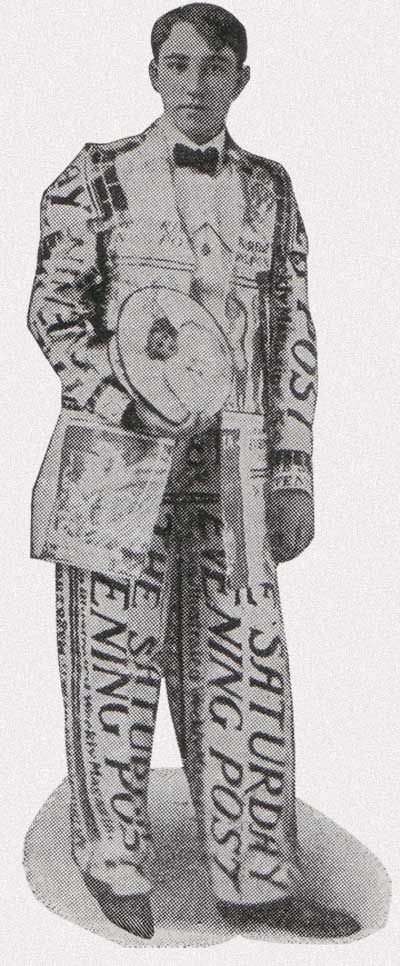Remember Post Boys and Post Girls?
Our Saturday Evening Post newsboys were crackerjack salesmen, according to the September 1909 news booklet printed to encourage these young entrepreneurs. These were compilations of success stories, jokes, and sales tips for Post newsboys.
“George Blount put a Saturday Evening Post advertisement on the biggest elephant in a circus parade,” boasted the editors in the 1909 newsletter. We’re not sure how George accomplished this task, but he apparently came away unscathed. But Kenneth Casselman of British Columbia did George one better when he “created a big sensation at a local roller-skating carnival by wearing a Saturday Evening Post suit. The trousers were made of oilcloth Post signs and the coat and cap were covered with front covers of recent issues of the Post.” Score one for creativity.

In the 1930s, “I had a route and delivered the Post at 5 cents a piece to five to 25 customers,” Robert Bonney of Peoria, Illinois wrote us in January of this year. “I got to keep 1.5 cents a copy,” which he put in his bank account. In 1936 “I entered the University of Maine and used my bank account to help pay my way.”
We’ve been privileged to hear from many of the former Post boys over the years and have often run photos of them in the magazine’s Letters to the Editor. We’ve also discovered that regular Saturday Evening Post contributor Charles Osgood was once a Post newsboy. And guess what else we’ve found out? Not all Post newsboys were boys.

Take the case of 10-year-old entrepreneur, Mary Simmons, of Portland, Oregon. We’re fortunate to have a great photo of Mary on her rounds from 1927 because, according to her son, David, she made a sale to a professional photographer, and “he asked her if she would step outside and pose for this picture.”
Like other “newsboys,” Mary gained some business savvy from her route. Her father died six years later, and the children had to run his carbon paper business. “My mother at age 16 drove a Model T all over eastern Oregon selling carbon paper, camping with a tent to save money,” David Powers e-mailed us.
Like other young sellers, Mary had to work hard to earn her $10 a week toward college. But there were perks, too. Van Duyn candies later became famous, but Mary recalled seeing Mr. Van Duyn making candy himself. “I could barely see over the big copper kettle,” she later told her son. “I could see him dump the butter in and smell the candy. Best of all was that the candy that was not perfect, I got to eat.”

OK, free candy was important. Even more exciting was the cool stuff you could earn with your sales vouchers. This ad from 1924 shows a Ma Jong set (with cardboard tiles), a great Boy Scout knife and, if you had as many as 95 “brown vouchers,” you could get this loud speaker. “Let the whole family and the ‘gang’ enjoy your radio concerts.” A dude (or dudette) couldn’t be more happening than that.